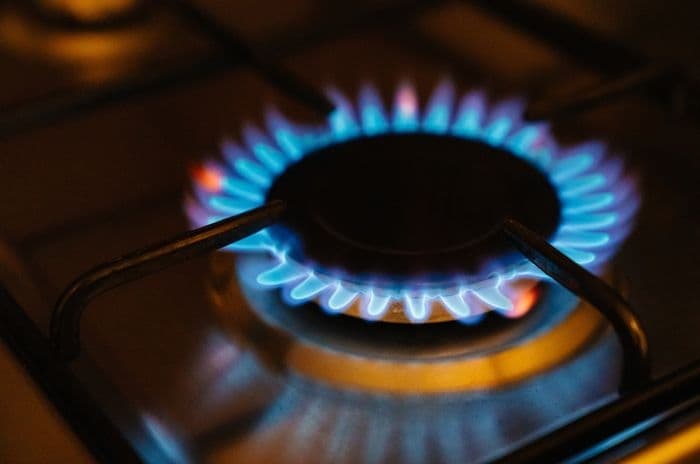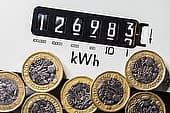Home > Energy > News > Cheapest energy tariffs reserved for new customers
Cheapest energy tariffs reserved for new customers
FOUR of the UK's Big Six energy suppliers are refusing to offer their cheapest tariffs to existing customers, a study has found.

Differences between the cheapest tariffs for new and current customers can be as much as £260, the BBC reported.
Their research found that, while highly competitive deals are used to attract new clients, any long-standing customer who also asks to be put on them will be refused.
The four providers found to have been running such deals - E.On, SSE, EDF, and British Gas - have all claimed they were simply "responding to changes in the market."
And in several ways, they're right. The Competition and Markets Authority's (CMA) recent recommendations essentially call for them to do more to encourage customers to switch their provider, while doing little to ensure that their standard variable tariffs (SVTs) remain low.
Switching system
More specifically, they achieve this by proposing a system based around a database of "disengaged customers".
This database lists any customer who has been with a particular supplier for more than three years. As such, it enables rivals of this supplier to contact the customer in question and offer them a tariff that's cheaper than what they currently have.
This, the CMA believe, will motivate more switching of suppliers. However, such an arrangement is in fact dependent on standard tariffs generally being more expensive than new-customer-only tariffs.
That they'll remain more expensive will be guaranteed by the CMA, whose report fell short of demanding price controls for SVTs.
As a result, the report allows for these standard tariffs to be as high as suppliers deem fit. At the same time, its switching-focused database will goad these same suppliers into pinching each other's customers with the promise of cheap deals.
Because of this, it paves the way for a system in which new-customer-only tariffs will be a fairly regular fixture, much to the disappointment of existing customers who can't access them.
In fact, given that Ofgem recently dropped the ban on such tariffs in April after the CMA recommended it in their investigation, these tariffs are now more likely to emerge than ever.
Indeed, the CMA themselves acknowledged that "the nature of competition in the markets ... is based around offering the most competitive rates to new customers."
Bait and switch
How to go green
Can energy monitors cut bills?
Fixed energy plans: good idea?
And as Choose have written elsewhere, the flip-side of such a system is that, once a new customer has been on their cheaper tariff for a year, they'll be automatically switched to a more expensive one.
This is known as "bait and switch", which is more or less as common as the gap between the cheapest tariffs for new and existing customers, largely because it's another manifestation of this gap.
For instance, it was found that six of the top 10 providers increased their customers' bills by over 35% once the first year tariff had drawn to a close.
Once again, this is something that the CMA's proposals won't stop, since the database of "disengaged customers" enables long-standing customers to be contacted by suppliers only after three years on the same SVT.
This means that no first-year customer can be saved from being put onto an SVT by a third party contacting them with a cheaper deal.
Little excitement
However, at the moment, there's still some uncertainty as to whether providers will even happily cooperate with the creation of a database of customers.
Recently, a senior partner at Ofgem, Rachel Fletcher, revealed that energy suppliers weren't that keen on working together to encourage more customers to switch from one to the other.
She said she wasn't seeing a particular high "amount of excitement about engaging with us on the database."
It's therefore an open question as to what particular form this database will take, and whether it will prove an efficient way of identifying and contacting customers who might be tempted to move supplier.
Maybe it will prove effective. However, it's likely that any effectiveness will often work towards encouraging distinct gaps between the cheapest tariffs suppliers offer to new customers and those they offer to existing customers.
At the moment, these gaps stand at around £200 or more. Maybe the introduction of CMA's proposed database won't make them any larger, but it may make them more of a regular feature of the energy market.
Coupled with the CMA's reluctance to set price controls except for prepaid tariffs, it will encourage providers to concentrate more on persuading customers to switch rather than on encouraging them to stay.
And while British Gas have recently withdrawn their new-customer-only tariff, the other three suppliers are sticking with theirs, suggesting that they may be around for some time to come.
Get insider tips and the latest offers in our newsletter

We are independent of all of the products and services we compare.

We order our comparison tables by price or feature and never by referral revenue.

We donate at least 5% of our profits to charity, and we aim to be climate positive.
Latest News

2 January 2024
Energy prices increase by 5%
23 November 2023
Energy price cap to rise 5% in January 2024
24 October 2023
Energy companies must do more to support customers

